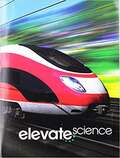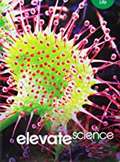- Table View
- List View
Elevate Science, Grade 3, Florida
by Michael Wysession Zipporah Miller Michael PadillaNIMAC-sourced textbook
Elevate Science, Grade 4
by Michael J. Padilla Zipporah Miller Michael E. WysessionNIMAC-sourced textbook
Elevate Science, Grade 5
by Michael J. Padilla Zipporah Miller Michael E. WysessionNIMAC-sourced textbook
Elevate Science, Grade 5, Florida
by Michael J. Padilla Zipporah Miller Michael E. WysessionNIMAC-sourced textbook
Elevate Science, Grade 6
by Michael J. Padilla Zipporah Miller Michael E. WysessionNIMAC-sourced textbook
Elevate Science, Grade 6
by Michael J. Padilla Zipporah Miller Michael E. WysessionNIMAC-sourced textbook
Elevate Science, Grade 6
by Michael J. Padilla Zipporah Miller Michael E. WysessionNIMAC-sourced textbook
Elevate Science, Grade 7
by Michael J. Padilla Zipporah Miller Michael E. WysessionNIMAC-sourced textbook
Elevate Science, Grade 7
by Michael J. Padilla Zipporah Miller Michael E. WysessionNIMAC-sourced textbook
Elevate Science, Grade 7 (Elevate Science)
by Michael J. Padilla Zipporah Miller Michael E. WysessionNIMAC-sourced textbook
Elevate Science, Grade 8
by Michael J. Padilla Zipporah Miller Michael E. WysessionNIMAC-sourced textbook
Elevate Science, Grade 8
by Michael J. Padilla Zipporah Miller Michael E. WysessionNIMAC-sourced textbook
Elevate Science, Grade K
by Michael J. Padilla Patricia Shehan Campbell Zipporah Miller Michael E. WysessionNIMAC-sourced textbook
Elevate Science, Segment 1: Grade 4
by Michael J. Padilla Zipporah Miller Michael E. WysessionNIMAC-sourced textbook <p>Grade 4</p>
Elevate Science, Segment 2: Grade 4
by Michael J. Padilla Zipporah Miller Michael E. WysessionNIMAC-sourced textbook <p>Grade 4</p>
Elevate Science, Segment 3: Grade 4
by Michael J. Padilla Zipporah Miller Michael E. WysessionNIMAC-sourced textbook <p>Grade 4</p>
Elevate Science, Segment 4: Grade 4
by Michael J. Padilla Zipporah Miller Michael E. WysessionNIMAC-sourced textbook <p>Grade 4</p>
Elevate Science, [Grade 3]
by Michael J. Padilla Zipporah Miller Michael E. WysessionNIMAC-sourced textbook
Elevate Science: Earth
by Michael J. Padilla Zipporah Miller Michael E. WysessionNIMAC-sourced textbook
Elevate Science: Earth, Florida
by Michael J. Padilla Zipporah Miller Michael E. WysessionNIMAC-sourced textbook
Elevate Science: Grade 4
by PearsonElevate Science is a comprehensive K-5 science program that focuses on active, student-centered learning. Elevate Science builds students' critical thinking, questioning, and collaboration skills. It fuels interest in STEM and creative problem solving while supporting literacy development for elementary-age learners.
Elevate Science: Grade 4, New York
by Michael J. Padilla Zipporah Miller Michael E. WysessionNIMAC-sourced textbook
Elevate Science: Life
by Michael J. Padilla Zipporah Miller Michael E. WysessionNIMAC-sourced textbook
Elevate Science: Physical
by Michael J. Padilla Zipporah Miller Michael E. WysessionNIMAC-sourced textbook
Elevate Science: Segment 1
by Michael J. Padilla Zipporah Miller Michael E. WysessionNIMAC-sourced textbook <p>Grade 1


